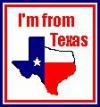

| Visitors Now: | |
| Total Visits: | |
| Total Stories: |

| Story Views | |
| Now: | |
| Last Hour: | |
| Last 24 Hours: | |
| Total: | |
Types of Knives – The Clasp Knife
Wednesday, October 31, 2012 20:21
% of readers think this story is Fact. Add your two cents.
The clasp knife is a
traditional knive pattern that has its origins inGermany
knives. This also accounts for the characteristic blade shape of the clasp
knife which was ideal for use in the butchering of animals. They were simple
knives that usually had no bolsters and were made from easy to obtain handle
materials such as wood or bone, all of which made these knives very inexpensive
and quite common. This also contributed to the naturally curved shape of the
handle on most clasp knives. These were a true “working man’s” knife that would
be fairly easy to replace if lost.
traditional knive pattern that has its origins in
knives. This also accounts for the characteristic blade shape of the clasp
knife which was ideal for use in the butchering of animals. They were simple
knives that usually had no bolsters and were made from easy to obtain handle
materials such as wood or bone, all of which made these knives very inexpensive
and quite common. This also contributed to the naturally curved shape of the
handle on most clasp knives. These were a true “working man’s” knife that would
be fairly easy to replace if lost.
Modern day clasp knifes are
known by many different names. The most
familiar name is the “sodbuster” which was popularized by Case in the early
1960’s. It has also been called a rangebuster, dirtbuster and a bullnose
depending upon the manufacturer. In some early Sear’s catalogs it was even listed as
a “horse castrating” knife. No matter what they were called, all are a basic
clasp knive pattern. The traditional style of clasp knife had a handle that fit
the hand well and made this knife easy to use all day. This was important as to
prevent injuries when cutting meat all day in a butcher’s shop. The traditional
blade design whose straight edge generally has a pronounced upward curve towards
the point was ideal for this purpose.
known by many different names. The most
familiar name is the “sodbuster” which was popularized by Case in the early
1960’s. It has also been called a rangebuster, dirtbuster and a bullnose
depending upon the manufacturer. In some early Sear’s catalogs it was even listed as
a “horse castrating” knife. No matter what they were called, all are a basic
clasp knive pattern. The traditional style of clasp knife had a handle that fit
the hand well and made this knife easy to use all day. This was important as to
prevent injuries when cutting meat all day in a butcher’s shop. The traditional
blade design whose straight edge generally has a pronounced upward curve towards
the point was ideal for this purpose.
While the term “sodbuster”
probably originated with the Homestead Act in 1862, this may have been the
origin of the term for this style of knife that was made popular by the Case
Knife Company. The real popularity of this type of clasp knife was probably
more a direct result of its notoriety as part of the kit carried by the
legendary Davy Crockett.
probably originated with the Homestead Act in 1862, this may have been the
origin of the term for this style of knife that was made popular by the Case
Knife Company. The real popularity of this type of clasp knife was probably
more a direct result of its notoriety as part of the kit carried by the
legendary Davy Crockett.
This classic knife pattern
survives today as an inexpensive and easy to use utility knife that can serve
you well on a daily basis.
survives today as an inexpensive and easy to use utility knife that can serve
you well on a daily basis.
Got
“Notschlachter”?
“Notschlachter”?
Staying above the water
line!
line!
Riverwalker
2012-10-31 18:44:08
Source: http://stealthsurvival.blogspot.com/2012/10/types-of-knives-clasp-knife.html
Source:



